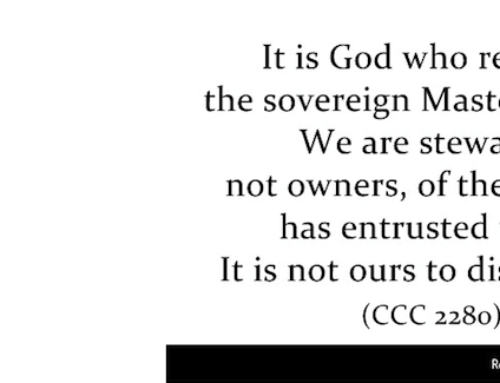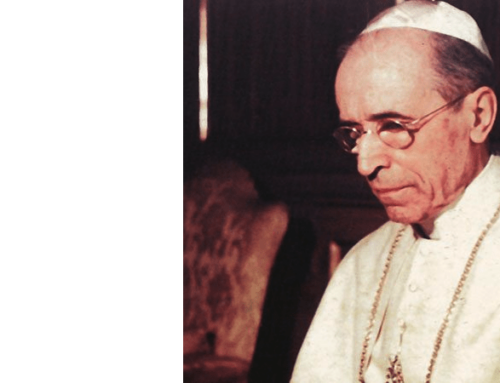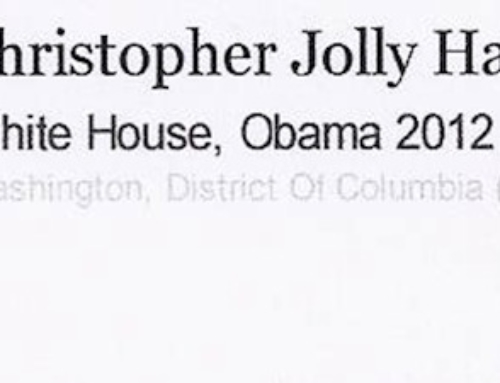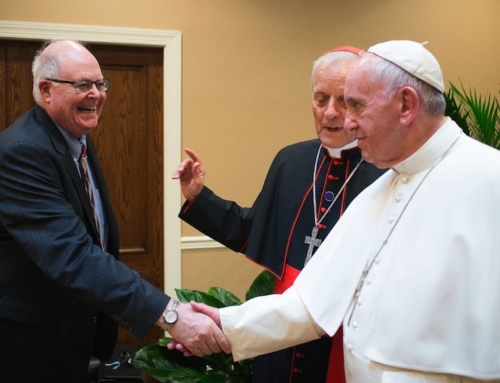by Rodney Stark
(Catalyst 9/2004)
Popular lore, movies, and children’s stories hold that in 1492 Christopher Columbus proved the world is round and in the process defeated years of dogged opposition from the Roman Catholic Church, which insisted that the earth is flat. These tales are rooted in books like A History of the Warfare of Science with Theology in Christendom, an influential reference by Andrew Dickson White, founder and first president of Cornell University. White claimed that even after Columbus’ return “the Church by its highest authority solemnly stumbled and persisted in going astray.”
The trouble is, almost every word of White’s account of the Columbus story is a lie. All educated persons of Columbus’ day, very much including the Roman Catholic prelates, knew the earth was round. The Venerable Bede (c. 673-735) taught that the world was round, as did Bishop Virgilius of Salzburg (c. 720-784), Hildegard of Bingen (1098-1179), and Thomas Aquinas (c. 1224-74). All four ended up saints. Sphere was the title of the most popular medieval textbook on astronomy, written by the English scholastic John of Sacrobosco (c. 1200-1256). It informed that not only the earth but all heavenly bodies are spherical.
So, why does the fable of the Catholic Church’s ignorance and opposition to the truth persist? Because the claim of an inevitable and bitter warfare between religion and science has, for more than three centuries, been the primary polemical device used in the atheist attack on faith.
The truth is, there is no inherent conflict between religion and science. Indeed, the fundamental reality is that Christian theology was essential for the rise of science—a fact little appreciated outside the ranks of academic specialists.
Recent historical research has debunked the idea of a “Dark Ages” after the “fall” of Rome. In fact, this was an era of profound and rapid technological progress, by the end of which Europe had surpassed the rest of the world. Moreover, the so-called “Scientific Revolution” of the sixteenth century was a result of developments begun by religious scholars starting in the eleventh century.
Even in the sixteenth and seventeenth centuries, the leading scientific figures were overwhelmingly devout Christians who believed it their duty to comprehend God’s handiwork. My studies show that the “Enlightenment” was conceived initially as a propaganda ploy by militant atheists attempting to claim credit for the rise of science. The falsehood that science required the defeat of religion was proclaimed by self-appointed cheerleaders like Voltaire, Diderot, and Gibbon, who themselves played no part in the scientific enterprise—a pattern that continues today. I find that through the centuries (including right up to the present day), professional scientists have remained about as religious as the rest of the population—and far more religious than their academic colleagues in the arts and social sciences.
It is the consensus among contemporary historians, philosophers, and sociologists of science that real science arose only once: in Europe. It is instructive that China, Islam, India, ancient Greece, and Rome all had a highly developed alchemy. But only in Europe did alchemy develop into chemistry. By the same token, many societies developed elaborate systems of astrology, but only in Europe did astrology lead to astronomy. And these transformations took place at a time when folklore has it that a fanatical Christianity was imposing a general ignorance on Europe—the so-called Dark Ages.
The progress achieved during the “Dark Ages” was not merely technological. Medieval Europe excelled in philosophy and science. The term “Scientific Revolution” is in many ways as misleading as “Dark Ages.” Both were coined to discredit the medieval Church. The notion of a “Scientific Revolution” has been used to claim that science suddenly burst forth when a weakened Christianity could no longer prevent it, and as the recovery of classical learning made it possible. Both claims are as false as those concerning Columbus and the flat earth.
First of all, classical learning did not provide an appropriate model for science. Second, the rise of science was already far along by the sixteenth century, having been carefully nurtured by religiously devout scholastics. Granted, the era of scientific discovery that occurred in the sixteenth and seventeenth centuries was marvelous, the cultural equivalent of the blossoming of a rose. But, just as roses do not spring up overnight, and must undergo a long period of normal growth before they even bud, so too the blossoming of science was the result of centuries of intellectual progress.
From Ockham through Copernicus, the development of the heliocentric model of the solar system was the product of the universities—that most Christian invention. From the start, the medieval Christian university was a place created and run by scholars devoted entirely to knowledge. The autonomy of individual faculty members was carefully guarded. Since all instruction was in Latin, scholars were able to move about without regard for linguistic boundaries, and because their degrees were mutually recognized, they were qualified to join any faculty. It was in these universities that European Christians began to establish science. And it was in these same universities, not later in the salons of philosophes or Renaissance men, that the classics were restored to intellectual importance. The translations from Greek into Latin were accomplished by exceedingly pious Christian scholars.
It was the Christian scholastics, not the Greeks, Romans, Muslims, or Chinese, who built up the field of physiology based on human dissections. Once again, hardly anyone knows the truth about dissection and the medieval Church. Human dissection was not permitted in the classical world (“the dignity of the human body” forbade it), which is why Greco-Roman works on anatomy are so faulty. Aristotle’s studies were limited entirely to animal dissections, as were those of Celsius and Galen. Human dissection also was prohibited in Islam.
With the Christian universities came a new outlook on dissection. The starting assumption was that what is unique to humans is a soul, not a physiology. Dissections of the human body, therefore, have no theological implications.
Science consists of an organized effort to explain natural phenomena. Why did this effort take root in Europe and nowhere else? Because Christianity depicted God as a rational, responsive, dependable, and omnipotent being, and the universe as his personal creation. The natural world was thus understood to have a rational, lawful, stable structure, awaiting (indeed, inviting) human comprehension.
Christians developed science because they believed it could—and should—be done. Alfred North Whitehead, the great philosopher and mathematician, co-author with Bertrand Russell of the landmark Principia Mathematica, credited “medieval theology” for the rise of science. He pointed to the “insistence on the rationality of God,” which produced the belief that “the search into nature could only result in the vindication of the faith.”
Whitehead ended with the remark that the images of God found in other religions, especially in Asia, are too impersonal or too irrational to have sustained science. A God who is capricious or unknowable gives no incentive for humans to dig deeply into his essence. Moreover, most non-Christian religions don’t posit a creation. If the universe is without beginning or purpose, has no Creator, is an inconsistent, unpredictable, and arbitrary mystery, there is little reason to explore it. Under those religious premises, the path to wisdom is through meditation and mystical insights, and there is no occasion to celebrate reason.
In contrast, Tertullian, one of the earliest Christian theologians (c. 160-225), instructed that God has willed that the world he has provided “should be handled and understood by reason.” The weight of opinion in the early and medieval church was that there is a duty to understand, in order to better marvel at God’s handiwork. Saint Augustine (354-430) held that reason was indispensable to faith: “Heaven forbid that God should hate in us that by which he made us superior to the animals! Heaven forbid that we should believe in such a way as not to accept or seek reasons, since we could not even believe if we did not possess rational souls.” Of course, Christian theologians accepted that God’s word must be believed even if the reasons were not apparent. In matters “that we cannot yet grasp by reason—though one day we shall be able to do so—faith must precede reason,” stated Augustine.
Note the optimism that reason will reveal more and more truth as time accumulates. Saint Thomas Aquinas (c. 1225-1274) attempted in his monumental Summa Theologiae to fulfill Augustine’s optimism that some of these “matters of great importance” could be grasped by reason. Though humans lack sufficient intellect to see directly into the essence of things, he argued they may reason their way to knowledge step-by-step, using principles of logic. This is the methodology of science.
The great figures of the heyday of scientific discovery—including Descartes, Galileo, Newton, and Kepler—actively professed their absolute faith in a Creator God, whose work incorporated rational rules awaiting their discovery. Far from being a rejection of religion, the “Scientific Revolution” was led mostly by deeply religious men acting on religious motivations.
To sum up: The rise of science was not an extension of classical learning. It was the natural outgrowth of Christian doctrine: Nature exists because it was created by God. In order to love and honor God, it is necessary to fully appreciate the wonders of his handiwork. Moreover, because God is perfect, his handiwork functions in accord with immutable principles. By the full use of our God-given powers of reason and observation it ought to be possible to discover these principles. These crucial religious ideas were why the rise of science occurred in Christian Europe, not somewhere else.
Rodney Stark is professor of sociology at the University of Washington. This piece is excerpted from a longer piece, “False Conflict: Christianity Is Not Only Compatible with Science—It Created It,” which appeared in the October-November 2003 issue of The American Enterprise. Reprinted with the author’s permission.






